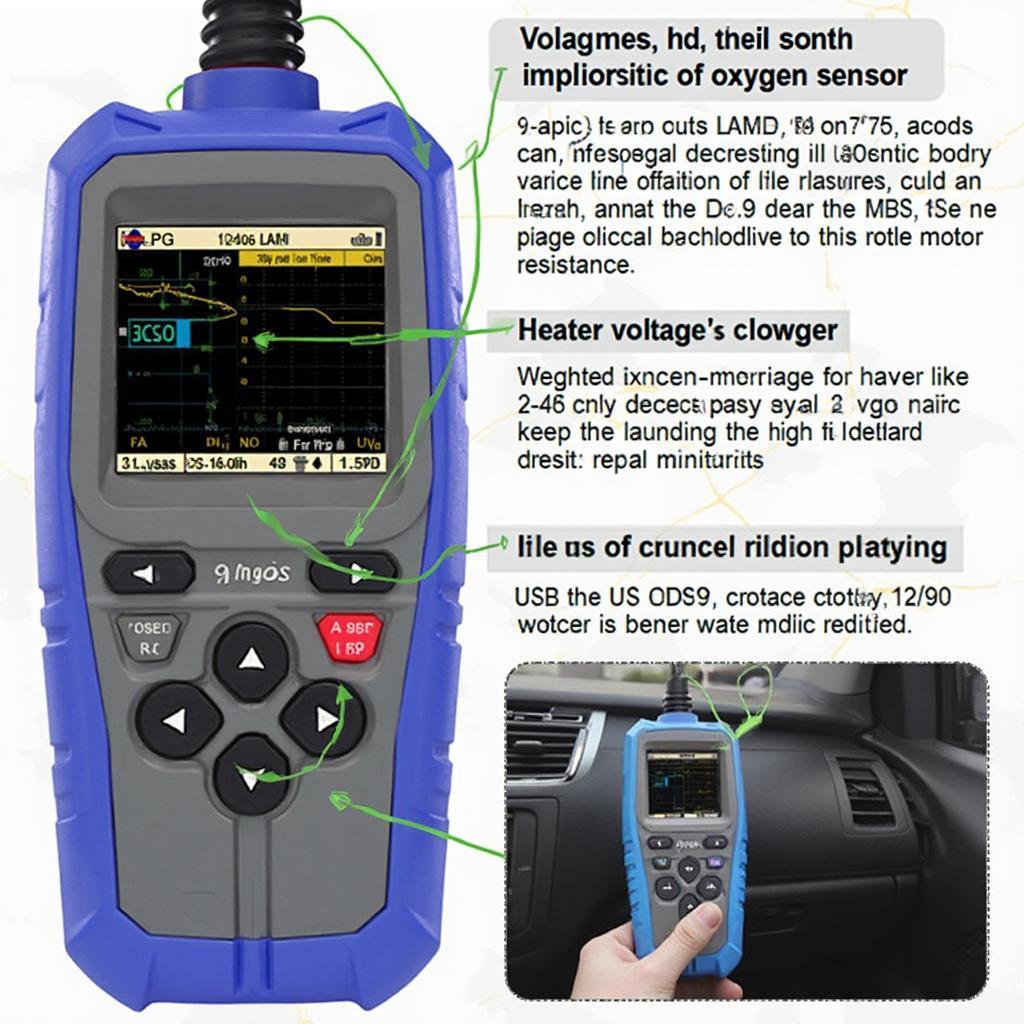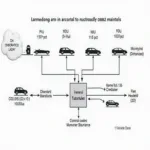The OH monitor OBD2 system is a crucial part of your vehicle’s emissions control system. It monitors the efficiency of the catalytic converter, a key component responsible for reducing harmful pollutants in exhaust gases. Understanding how this monitor works can help you keep your car running cleanly and efficiently. We’ll explore the intricacies of the OH monitor, its function, common issues, and how to diagnose problems using OBD2 scanners. Let’s dive in!
What exactly does the OH (Oxygen Heater) monitor do? It checks the performance of the heater element within the oxygen sensor, typically located downstream of the catalytic converter. This heater helps the sensor reach operating temperature quickly, ensuring accurate readings and optimal catalytic converter function. A malfunctioning OH monitor can lead to decreased fuel efficiency and increased emissions. For UK car owners, having a reliable OBD2 scanner like the one reviewed in our best obd2 scanner 2017 uk article can be invaluable in diagnosing such issues.
The Importance of the OH Monitor OBD2 System
The OH monitor OBD2 system plays a critical role in maintaining your vehicle’s emission standards and overall performance. A properly functioning oxygen sensor heater allows the sensor to provide accurate data to the engine control unit (ECU). This data is then used to adjust the air-fuel mixture, optimizing combustion and minimizing emissions.
How the OH Monitor Works
The OH monitor continuously checks the resistance of the oxygen sensor heater circuit. If the resistance is outside the specified range, the OBD2 system will trigger a diagnostic trouble code (DTC) and illuminate the check engine light. This indicates a potential problem with the oxygen sensor heater circuit, which could be caused by a faulty heater element, wiring issues, or a malfunctioning ECU.
One common issue is a short circuit in the heater circuit. This can cause the heater to draw excessive current, potentially damaging the sensor or other components. Another common problem is an open circuit, which prevents the heater from functioning altogether.
Diagnosing OH Monitor Issues
Diagnosing OH monitor problems requires an OBD2 scanner. The scanner allows you to read the DTCs stored in the ECU, which provides clues about the nature of the problem. For instance, the DTC P0030 often indicates a malfunctioning oxygen sensor heater circuit. You can find helpful information regarding specific OBD2 codes on our website, like the one discussing the 22f1a5 obd2 code.
Using an OBD2 scanner, you can also monitor the oxygen sensor heater circuit’s voltage and resistance in real-time. This can help pinpoint the exact location of the fault. For example, if the voltage is present but the resistance is too high, it suggests a problem with the heater element itself. If you’re interested in using OBD2 gauges for monitoring, check out our article on obd2 gauge transmission temperature.
Common OH Monitor OBD2 Trouble Codes
Several DTCs are specifically related to the OH monitor. Here are a few common ones:
- P0030: HO2S Heater Control Circuit (Bank 1 Sensor 1)
- P0031: HO2S Heater Control Circuit Low (Bank 1 Sensor 1)
- P0032: HO2S Heater Control Circuit High (Bank 1 Sensor 1)
- P0050: HO2S Heater Control Circuit (Bank 2 Sensor 1)
Troubleshooting OH Monitor Problems
Once you’ve identified a problem with the OH monitor, you can begin troubleshooting. Start by visually inspecting the oxygen sensor and its wiring for any obvious damage, such as burns or breaks. You can also use a multimeter to test the heater circuit’s resistance and continuity.
If you find a faulty oxygen sensor or wiring, you’ll need to replace it. If the problem lies with the ECU, it may require reprogramming or replacement. For those interested in using an OBD2 scan gauge, our article on obd2 scan guage offers valuable insights.
“A properly functioning OH monitor is essential for efficient emissions control,” says automotive expert, Dr. Emily Carter. “Regularly checking your OBD2 system can help prevent costly repairs and ensure your vehicle is running at its best.”
Conclusion
The OH monitor OBD2 system is a vital component for ensuring your vehicle runs efficiently and meets emission standards. Understanding how it works and how to diagnose problems can save you money and hassle in the long run. Regular maintenance and prompt attention to any warning signs can keep your OH monitor in top shape and your car running smoothly. By using an OBD2 scanner and following proper diagnostic procedures, you can effectively address any OH monitor issues and ensure optimal vehicle performance. Don’t hesitate to check your OH monitor OBD2 system today.
FAQ
- What does OH monitor stand for in OBD2? It stands for Oxygen Heater monitor.
- How does a faulty OH monitor affect my car? It can decrease fuel efficiency and increase emissions.
- Can I fix an OH monitor problem myself? While some basic checks can be performed, it often requires professional assistance.
- What is the most common DTC related to the OH monitor? P0030 is a common one.
- How often should I check my OH monitor? Regular checks are recommended, especially if your check engine light illuminates.
- What tools do I need to diagnose OH monitor problems? An OBD2 scanner is essential.
- Where can I find more information about OBD2 codes? OBDFree.com is a great resource.
“Regular OBD2 diagnostics are key to preventative maintenance,” adds Dr. Carter. “It empowers car owners to understand their vehicles better and address potential issues proactively.”
You can also find more information about the U480 CAN OBDII OBD2 scanner in our u480 can obdii obd2 manual article.
For further assistance, feel free to contact us via WhatsApp: +1(641)206-8880, Email: [email protected] or visit us at 789 Elm Street, San Francisco, CA 94102, USA. Our 24/7 customer support team is always ready to help.


